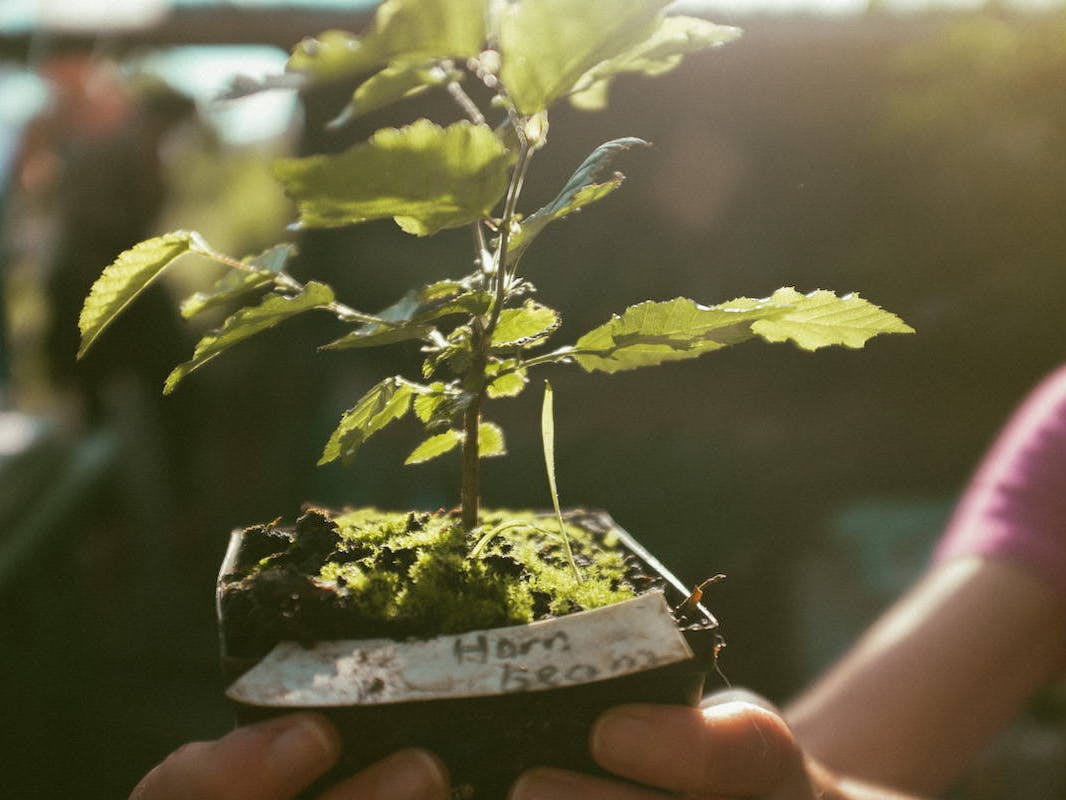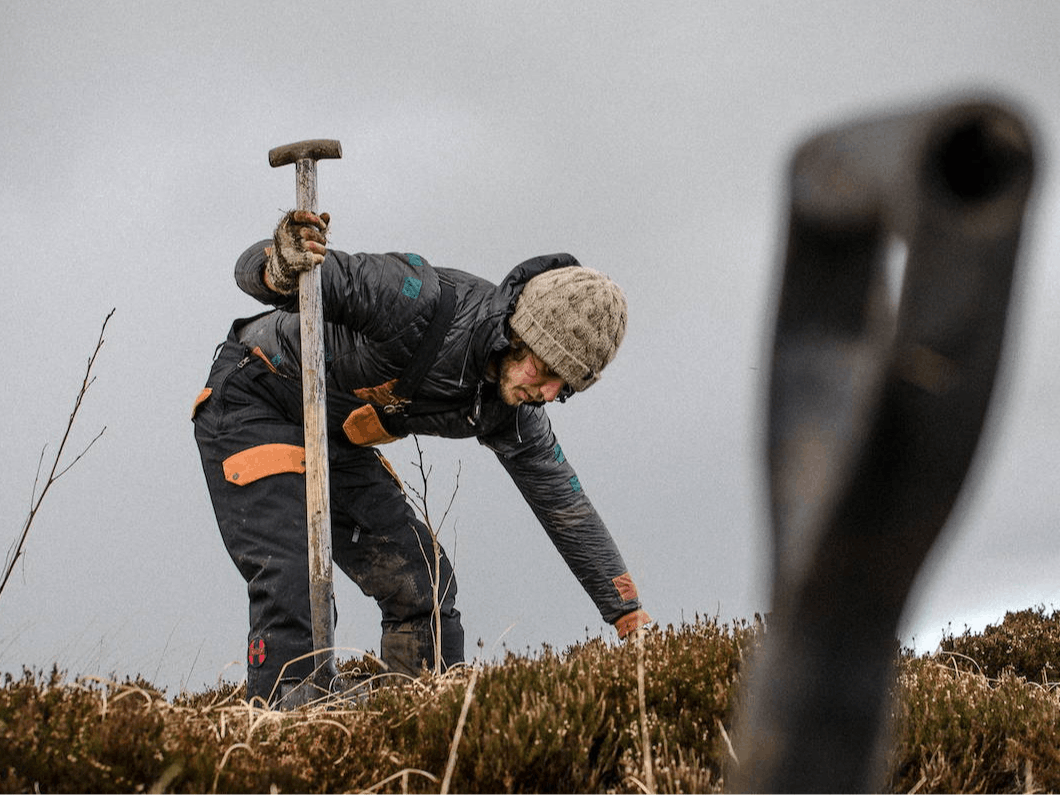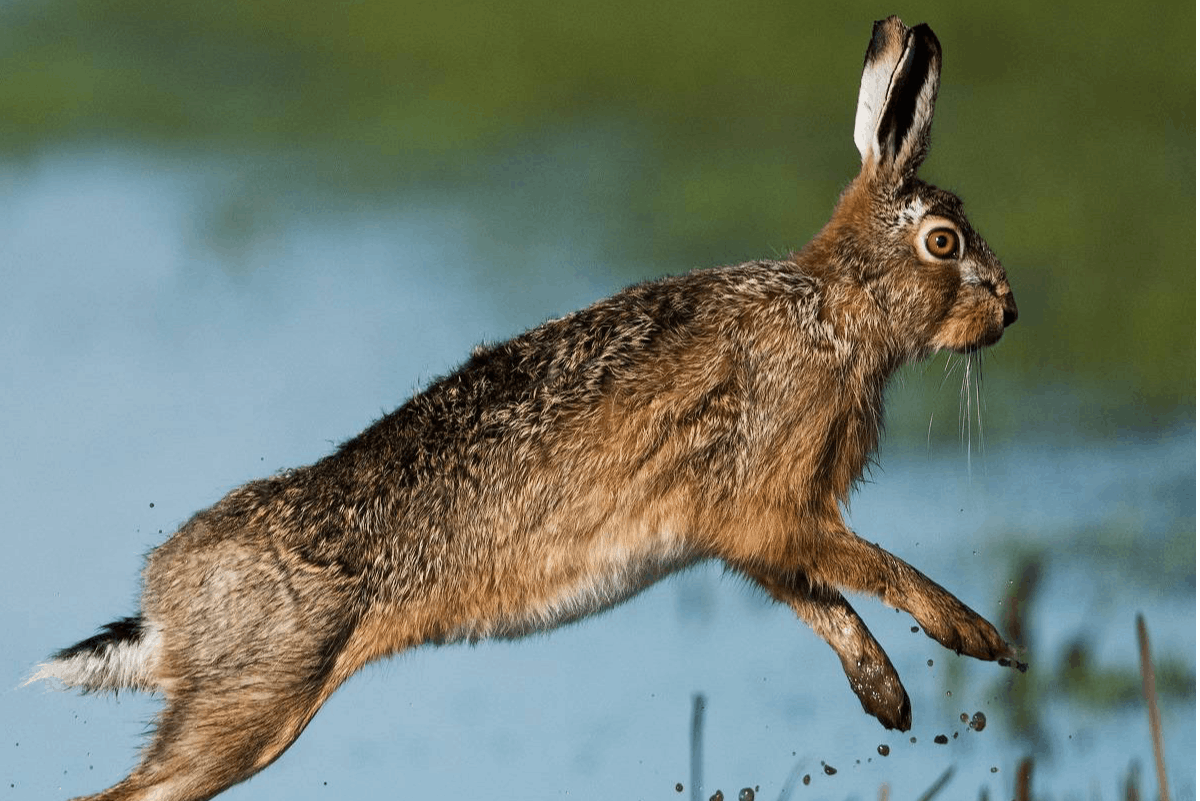- Trees planted: 7,200
- Budget spent: £15,149
- Status: Implemented
Ireland was once the most forested country in Europe. Today it has just 11% tree cover, only 2% of which is native forest. Working with our tree planting partners Hometree, our Reforesting Ireland project seeks to reforest and rewild a 60 hectare property in an area that currently has no wild forests.
Project Timeline
Spring 2021
700 trees are planted, bringing our total trees planted in Ireland to 6,200.
Spring 2020
Our biggest batch of Irish trees, a total of 4000 native saplings, is planted at our project area.
The Ecosystem
Tree species
At our Reforesting Ireland project we plant Scarlett willow (Salix alba), goat willow (Salix caprea), grey willow (Salix cinerea), osier willow (Salix viminalis), alder (Alnus glutinosa), downy birch (Betula pubescens), European hornbeam (Carpinus betulus), common hawthorn (Cratageus monogyna), Scots pine (Pinus sylvestris), rowan (Sorbus aucuparia), holly (Ilex aquifolium), blackthorn (Prunus spinosa), common oak (Quercus robur) and sessile oak (Quercus petraea).
Priority species
Hen harrier (Circus cyaneus), pine marten (Martes martes), brown hare (Lepus europaeus) are all present in the area. To learn more about these species, head over to our wildlife in Ireland or rewilding Ireland guides.
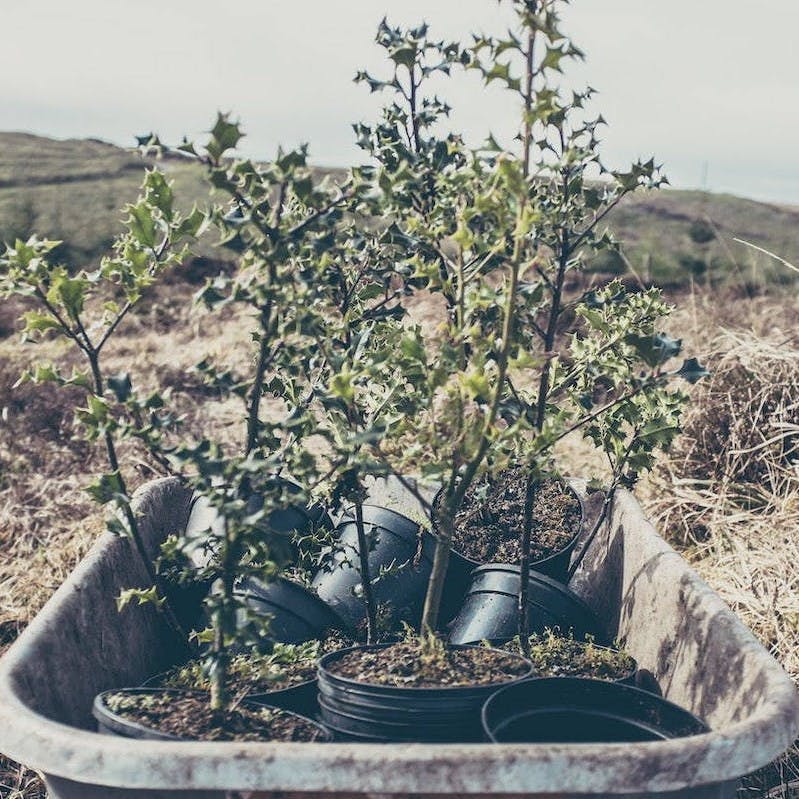
The Land of the Forest People
The Irish, descendants of the Gaels, which means forest people, have worshipped trees longer than they’ve believed in God.
Centuries of deforestation for agriculture and timber have reduced Ireland’s once extensive native woodlands to small, isolated remnants. Old native woodlands can still to be found in areas of thin soils unsuitable for agriculture, but today, the country is known for its landscape of open, green pastures instead.
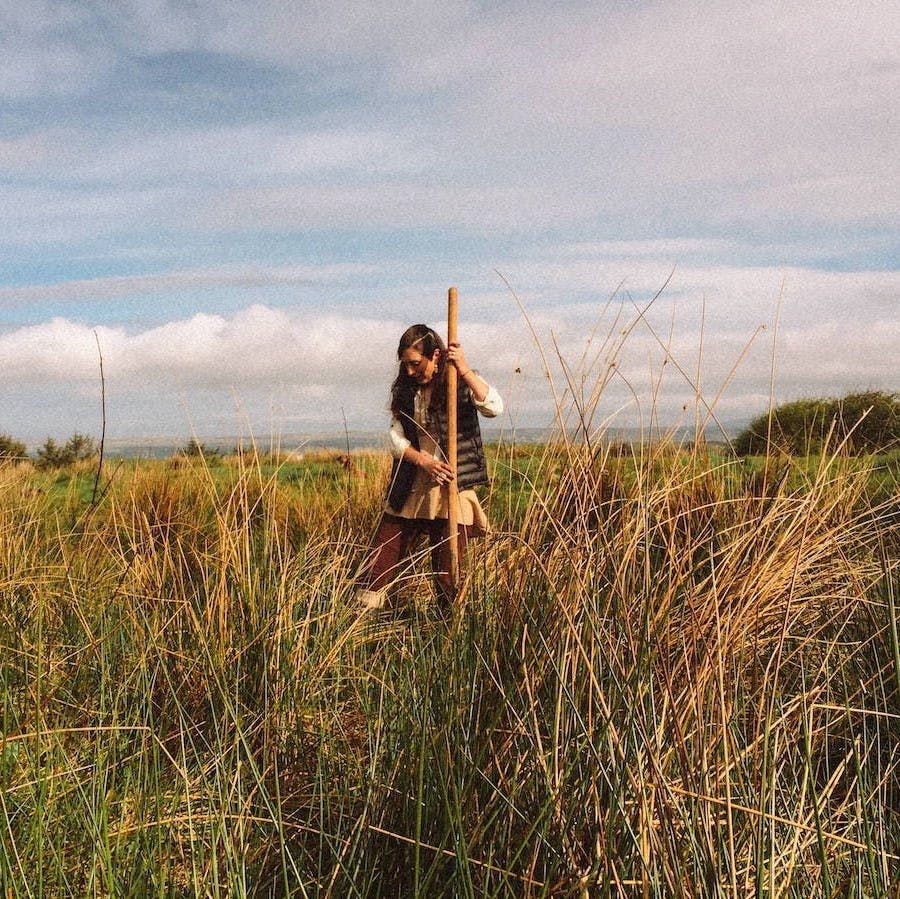
A Long History of Deforestation
Legend has it that a squirrel could traverse through the tree canopy from the North of Ireland to the far South without ever touching the forest floor.
Sadly, it was these rich woodlands, particularly the robust oaks that were prized by England for the construction of its cathedrals, the reconstruction of London after the Great Fire and its naval fleets between 1600s – 1800s. Large areas of old growth forests were decimated by the English and never replaced.
A Unique Habitat
What makes this ecosystem special?
Ireland's native woodlands are mostly made up of colourful broadleaf trees like oak, ash, alder and birch. A healthy, thriving forest provides vital habitat for a diversity of flora and fauna, including great spotted woodpecker, narrow-leaved helleborine, wood millet, red squirrels and Ireland's rarest native mammal, the pine marten.
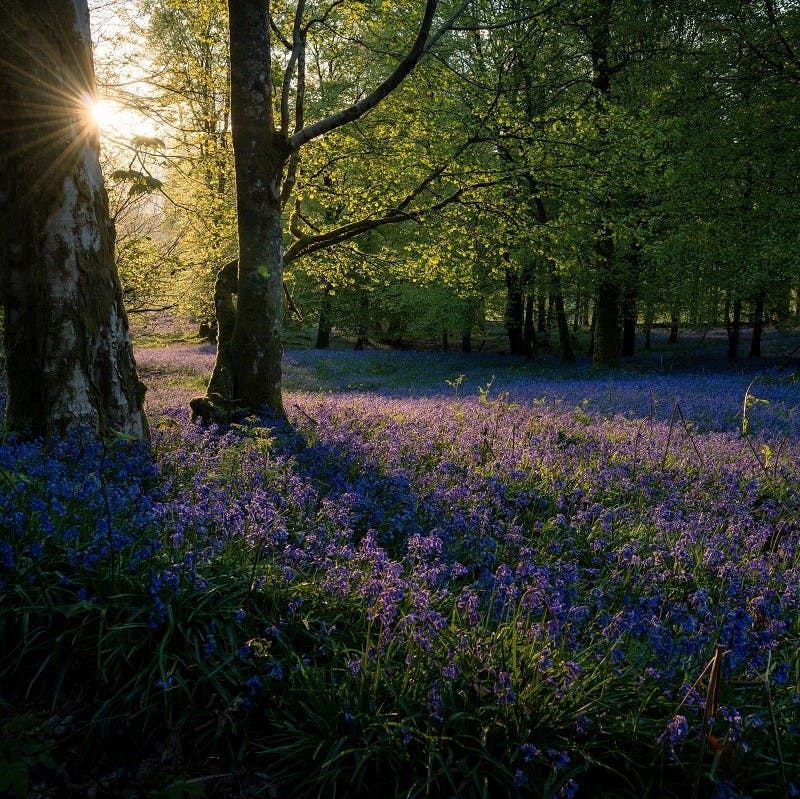
The Threats
In response to legal requirements to reduce carbon emissions, the Irish government is primarily funding the planting of non-native conifer monocultures. These monoculture forests cause soil acidification, create excess sediment in rivers, and are often devoid of wildlife. These lucrative plantations also price small farmers off the land.
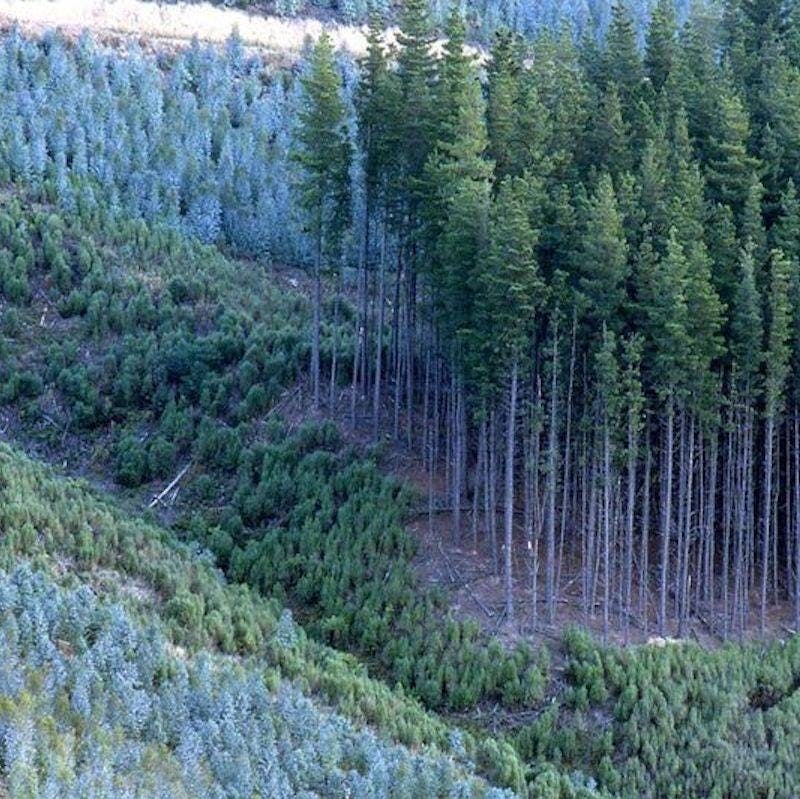

Reforesting Ireland
The Journey
Hometree
At this moment, we are no longer planting in Ireland, but if you are looking to do so or get involved head over to Hometree, our partners who are doing great things in Ireland. Join them on one of their monthly tree planting and maintenance days where you can get your hands dirty and support the regeneration of native woodland in Ireland.
the team behind the project

Matt Davies, Mossy Earth

Matt Smith, Forest Engineer at HomeTree

Mitch Corbett, Forest Engineer at HomeTree
Sources & further reading

- “The potential CO2 sequestered in vegetation and soil in British broadleaf forests over a period of 100 years” - Science Direct
- “Can the mid-Holocene provide suitable models for rewilding the landscape in Britain?” - Bournemouth University
